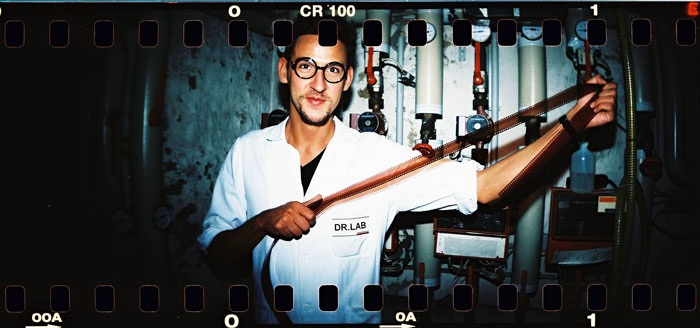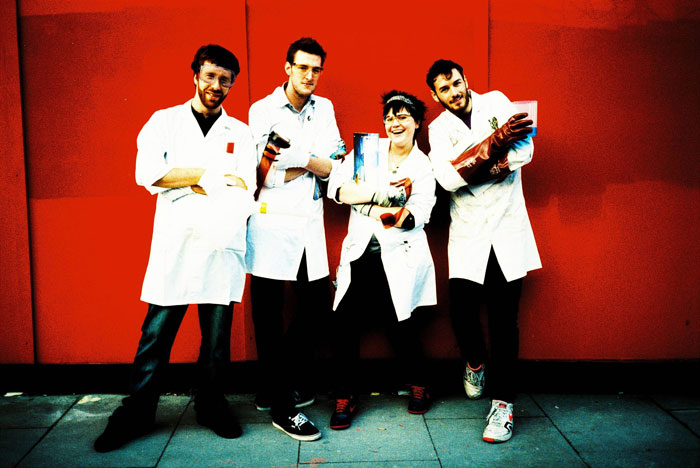
The Future is Analogue! At Lomography we wanna make sure everyone can afford to shoot analogue- so, not only are we making affordable cameras, an awesome variety of films, and some stylin’ accessories- we are now taking it up a notch and are proud to present our very own film developing service. Our LomoLab is ready for you! Whether you shoot 120 or 35 mm format, color negative, black and white or redscale, we can develop, cross-process and do special formats too.
The Future is Analogue! At Lomography we wanna make sure everyone can afford to shoot analogue- so, not only are we making affordable cameras, an awesome variety of films, and some stylin’ accessories- we are now taking it up a notch and are proud to present our very own film developing service. Our LomoLab is ready for you! Whether you shoot 120 or 35 mm format, color negative, black and white or redscale, we can develop, cross-process and do special formats too.
We know what your analogue needs are, we are all Lomographers too! Make the LomoLab your ultimate go-to place for film processing. Why? Cause we know film the best! Think of all the love, care and attention we put into the cameras you’ve come to love; give your film the same special care!
By Lomographers for Lomographers, we want your images to look great so we supervise and develop the film ourselves! Panoramic shots, sprocket holes, special Lomography formats, no problem! We develop and scan it all!
You can you use the LomoLab service via mail order wherever you live in the UK, or you can drop your film into any Lomography Gallery Store.
So, plenty of blah blah blah, but what do we offer? Film processing for 35 mm and 120 film in the following formats:
Processing Methods:
Mail Order: We can develop and scan your films and will email your scans to you. Simply order online via the Lomolab website page and wait for an email instructing you on how and where to post your films off.
Retail: If you are in London, Pop into the Lomography Gallery Store and drop your films off for developing.

Need a little refresher course on film? In short, here’s what happens each time you press the shutter button:
In other words, film needs light to create a photograph.
There are four main types of film: 120 (medium format), 110, 35 mm and instant film. Instant film develops immediately and needs no extra development (aside from time!).
35 mm film is the most common type of film since it can be easily processed in most film labs. There are many different types of 35 mm film – color negative, color positive (also referred to as slide), black & white, infrared, and redscale film. You can use this film in tons of cameras, we recommend the Lomo LC-A+, Diana Mini, Sprocket Rocket, and Spinner 360°. Film information (such as the brand and type) is usually noted in the film’s sprocket holes.
Color negative is processed in C-41 chemicals, while slide film uses E-6. To achieve color shifts and deep saturation, choose to have your slides cross-processed. Redscale film is developed normally as color negative film.
After shooting, make sure to keep the camera door closed when you’re rewinding the film to prevent exposure!
No sprocket holes or film canister; 120 film is wrapped around a spool and covered in protective paper; it produces square images. Film information is shown on the shielding paper. Cameras that use 120 film are called medium-format cameras, our favourites are the Diana F+, Holga, and Lomo Lubitel 166+.
Because 120 films are not commonly distributed in film shops, not all film labs offer processing and printing for this format.
Lomographers have been practicing the “cross-processing” method over the years using slide film. We love this technique because it can bring out the vignettes more prominently, and yield a totally unique, surreal appeal to our images.
Slide films typically use E-6 chemicals for normal processing and give you vivid colors and fine grain. But if you’re feeling experimental, try cross-processing to achieve a more extreme effect. This is done when slide film is developed in C-41 chemicals, which is used in processing color negative film. The results will surprise you – deep saturation, contrast and wild color shifts! Explore various color and saturation effects by testing different slide films.
If you want to get tips, ideas and maybe some fun things to do with your Lomographs, create your own LomoHome and feel the Lomo love.